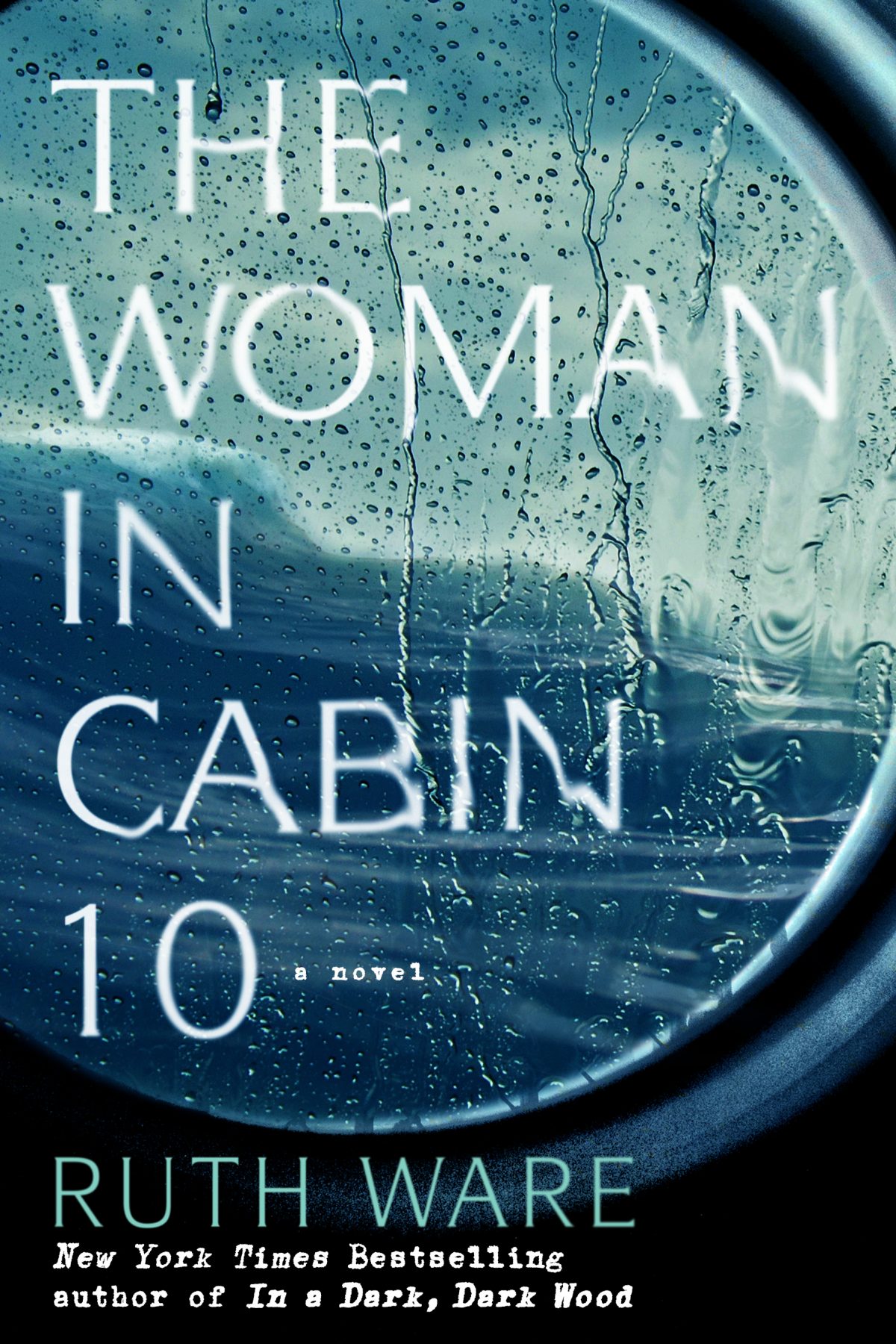
The Woman in Cabin 10



Ruth Ware is an international number one bestseller. Her thrillers In a Dark, Dark Wood, The Woman in Cabin 10, The Lying Game, The Death of Mrs Westaway, The Turn of the Key, One by One, The It Girl, Zero Days, One Perfect Couple and The Woman in Suite 11 have appeared on bestseller lists around the world, including the Sunday Times and New York Times, and have sold more than ten million copies.
Her books have been optioned for both film and TV, and she is published in more than 40 languages.
Ruth lives near Brighton with her family. Visit ruthware.com to find out more.
Summary
The Woman in Cabin 10 is a 2016 mystery novel by Ruth Ware that plunges its protagonist into a locked-room murder at sea, where her credibility is constantly questioned.
The Voyage and the Disappearing Victim
The novel opens with Lo Blacklock, a travel journalist in London, struggling with insomnia and post-traumatic stress after a terrifying burglary. To cover a story for her magazine, she boards the luxurious cruise ship Aurora Borealis, owned by tycoon Lord Richard Bullmer and his heiress wife, Anne Bullmer.
On her first night, Lo wakes to a woman’s scream and a splash, convinced she heard a body being thrown into the North Sea. When she investigates, she finds a smear of blood on the veranda door of the room next to hers. However, when Lo reports the suspected murder, no one believes her. The room, which Lo had briefly visited the night before to borrow mascara, is now empty, and ship records claim it was never occupied by a guest. Head of security, Johann Nilsson, and the ship’s high-powered guests dismiss Lo’s testimony as paranoia.
The Trap and the Truth
The situation reaches a climax when the woman Lo believed was the victim, Carrie, appears alive and lures Lo to the ship’s lower decks, trapping her in a cell near the engine room. Lo discovers that Carrie is not Anne Bullmer, but Richard Bullmer’s mistress, who was impersonating Anne (who is dying of cancer). Carrie reveals that Bullmer snuck her aboard and then convinced her to help him dispose of Anne’s body after she died in what Bullmer claimed was an accident during a domestic dispute.
Lo manages to bond with Carrie, convincing her to set her free. Lo escapes the ship in the Norwegian fjords and, after a series of desperate encounters with a corrupt hotel manager and police officer, is finally rescued by a gentle Norwegian farmer.
The Aftermath and Final Twist
The investigation dredges two bodies from the North Sea: Richard Bullmer, whose gunshot wound is ruled a suicide, and a young woman Lo fears is Carrie. Lo agrees to move to New York with her partner, Judah, and tries to move on.
In the final twist, Lo discovers that the young woman’s body found in the sea was actually Anne Bullmer, and that Richard Bullmer’s gunshot wound was not self-inflicted. She is later wired money from a mysterious Swiss bank account, which she believes belongs to Carrie, hinting that Carrie survived and managed to escape.
Character analysis
Laura (Lo) Blacklock – the crazy, drunk apparently
is the novel’s protagonist and narrator, a travel journalist in London whose life is upended by a basement flat burglary that leaves her traumatized and suffering from acute insomnia and paranoia. She is ambitious, viewing her assignment on the luxury cruise ship, the Aurora Borealis, as crucial for her career.
Resilience and Flaws: Despite her mental health struggles (for which she takes antidepressants) and persistent drinking, Lo is resilient and dogged. When she hears a scream and a splash, she immediately becomes suspicious and launches an investigation, driven by a personal sense of duty to protect victims, having recently been one herself.
The Hero’s Journey: Her decision to pursue the truth despite the ship staff’s attempts to discredit her (by using her mental health and antidepressant use against her) is a mark of her strength and ethical conviction. She eventually escapes her captor and is the one who brings the truth to light.
Judah
is Lo’s devoted boyfriend and a foreign correspondent. He is characterized as a forgiving, attentive, and serious romantic partner who repeatedly sacrifices his own ambitions (like a dream job in New York) to stay with Lo. He is devastated by the burglary and is Lo’s anchor to reality from the mainland. He is the one who sounds the alarm when Lo goes missing and staunchly refuses to believe she is dead, demonstrating his unwavering loyalty.
Lord Richard Bullmer
is the handsome, self-made billionaire owner of the Aurora Borealis. Initially appearing level-headed and charming, he is revealed to be the novel’s menacing villain.
Motive and Deception: Bullmer orchestrated a scheme to murder his terminally ill wife, Lady Anne Bullmer, when she was unexpectedly cured of cancer, so he could inherit her fortune.
Abuse of Power: He uses his wealth and power to orchestrate the entire plot, including rigging the ship’s systems and manipulating his mistress, Carrie, into posing as Anne and helping him dispose of the body. He then uses his influence to have his staff discredit Lo’s murder claims.
Lady Anne Bullmer
Anne Bullmer is Richard Bullmer’s heiress wife. She is reclusive and was diagnosed with late-stage breast cancer four years before the cruise. Lo initially mistakes Carrie for Anne. Anne was the woman whose body was dumped into the North Sea, and Lo discovers much later that Carrie spent the entire week posing as Anne to cover up the murder. The fact that Richard murdered her after she was given a clean bill of health highlights his cold-blooded greed.
Carrie (The Woman in Cabin 10)
Carrie, initially unnamed, is Richard Bullmer’s mistress who is manipulated into posing as Anne Bullmer (The Woman in Cabin 10) after Anne’s death.
The Victim/Accomplice: Carrie is lured into the plot by Richard, whom she loves. She initially believes his story that Anne’s death was an accident and agrees to cover up the disposal of the body.
Redemption: Lo eventually bonds with Carrie and convinces her that Richard will murder her next. Carrie is redeemed when she helps Lo escape and eventually sends Bullmer overboard (implied) before wiring a large sum of money to Lo as an apology, cementing her status as a complex, flawed survivor.
Alexander Belhomme
Alexander Belhomme is a well-meaning, gossipy food critic and travel journalist. He is a secondary character whose physical struggles (overweight, unable to climb stairs) initially make Lo suspect him. Crucially, he provides Lo and Ben with vital information, as he was sleepless the night of the murder and saw other guests prowling the halls, confirming that the ship’s guests were hiding secrets.
Solberg
is an investor who was supposed to occupy Cabin 10 but had to cancel his trip due to a mysterious break-in and stolen passport. Lo correctly suspects that she and Solberg were both targeted by break-ins, and later learns that Bullmer orchestrated Solberg’s break-in to ensure the cabin was empty for Carrie.
Konrad Horst
is the gentle, unthreatening Norwegian farmer who rescues Lo after her escape. Despite his isolation and language barrier, he offers Lo refuge in his barn and takes her to the police station. He represents pure kindness and safety in a narrative filled with betrayal and corruption.
Themes
Powerlessness and Violated Space 🏚️
The theme of powerlessness and violated space is central, highlighted by the trials Lo endures in both her apartment and her cabin aboard the ship. The novel opens with Lo as a victim of a burglary, which instills acute post-traumatic stress and an obsession with privacy. Her space is repeatedly violated—from items going missing in her cabin to being trapped in a cell deep within the ship’s hull.
Ware draws a conscious connection between the psychological trauma of physical violation (the burglary, the confined spaces) and the trauma of sexual violence (Ben’s drunken assault, Bullmer’s abuse of Carrie). The narrative emphasizes the destructive nature of these violations, particularly when experienced by women. Ultimately, many female characters bond over their victimization, and this solidarity becomes a source of strength against their attackers.
Women and Mental Illness 🧠
Ware explicitly uses the novel to discuss women and the stigma of mental illness. Lo is transparent about taking antidepressants for a chemical imbalance, treating it like a physical ailment. Despite this clarity, Lo’s testimony about the murder is consistently rejected and discredited by others due to her:
Paranoia and trauma from the recent burglary.
Drinking habits on the cruise.
Antidepressant medication use.
Ware critiques the systematic silencing of women experiencing trauma, showing that Lo is dismissed as “hysterical.” The narrative highlights that women’s testimony is often purposefully ignored to benefit powerful men, with mental illness frequently cited as proof of unreliability, despite the absurdity of that ideology.
Wealth, Masculinity, and Power 🛥️
The novel argues that wealth, masculinity, and whiteness form a system of power that benefits all influential men.
Symbolic Prison: Lord Richard Bullmer’s all-white, luxuriously decorated cruise ship, the Aurora Borealis, symbolizes his wealth and influence. It becomes a physical and symbolic prison for Lo, preventing her from threatening Bullmer’s reputation.
Exclusion and Complicity: Lo feels profoundly uncomfortable and excluded from this white, affluent world. Ware suggests that even male characters who are innocent of the murder, like Ben Howard, are complicit in this system. Ben’s initial aggression toward Lo and the male guests’ mockery of Tina’s ambition show that all men benefit from and participate in a system that enables powerful men, good or evil, to evade accountability.
Book Club Questions
What is your opinion of Ruth Ware’s approach to blending psychological thriller elements with the tropes of a classic maritime mystery? For readers familiar with her work, how does The Woman in Cabin 10 compare to other titles like In a Dark, Dark Wood?
The novel opens with Lo’s traumatic break-in experience. How did this sequence set the tone of instability and paranoia for the rest of the story, and what expectations did it create for you about Lo’s reliability?
What was your reaction to the revelation of Carrie’s true identity and her manipulative relationship with Richard Bullmer? Did you find the resolution—including Bullmer’s death and Carrie’s survival—satisfying?
Questioned Judgment: Lo struggled with the validity of her own perceptions. Have you ever experienced a situation in which you questioned your own judgment despite being certain of what you witnessed?
Appearance vs. Reality: The luxury cruise setting creates a stark contrast between opulence and dark reality. How do you navigate situations where you feel out of place in supposedly “exclusive” or unfamiliar environments?
Stigma: Lo’s mental health and antidepressant use were used by others to discredit her testimony. Have you witnessed or experienced similar stigmatization that causes a person’s competency to be questioned?
Rebuilding Trust: The novel explores how trauma affects one’s sense of safety. How do you rebuild trust in your environment or in others after that trust has been violated?
Trustworthiness: Throughout the story, Lo must decide whom to trust. How do you generally determine a person’s trustworthiness in new relationships or unfamiliar situations?
Wealth and Accountability: How does the novel address the intersection of wealth, power, and accountability? What commentary does the narrative deliver about the privilege that allows figures like Lord Bullmer to attempt to escape justice?
Dismissal of Testimony: The book explores the fact that women’s testimonies are often dismissed or questioned, especially when they involve powerful men or when the woman has a history of mental distress. How does this issue resonate with current real-world discussions about the importance of believing women’s experiences?
Mental Health and Gender Bias: What does the novel suggest about the relationship between mental health stigma and gender bias in professional or high-stakes settings?
The Motif of Drowning: How does Ware use the motif of drowning throughout the novel, both literally (the body in the North Sea) and metaphorically (Lo’s psychological state, her career ambition)?
Symbolism of Décor: Analyze the symbolic significance of the Aurora Borealis cruise ship’s all-white décor. How does this imagery connect to the novel’s themes of illusion, false purity, and hidden corruption?
Confined Space: How does the confined space of the cruise ship serve both the plot (limiting suspects) and the development of themes about power, control, and psychological pressure?
The Unreliable Narrator’s Trust: How does Ware balance the need to use Lo’s unreliable narration (due to her paranoia and drinking) to build suspense with the necessity of maintaining the reader’s essential trust in her to follow the investigation?
Safety Protocol Design: If you were tasked with designing a safety protocol for a luxury cruise based on the events in this novel, what elements would you include to protect guests and ensure staff accountability?
A Letter from Carrie: Imagine writing a letter from Carrie to Lo, explaining her final actions (killing Bullmer and sending the money). What would the tone of the letter be, and how would she justify her choices?
Perspective Shift: How might this story be different if the primary narration were told from Carrie’s perspective? Which scenes (e.g., her time in Cabin 10, the confrontation with Bullmer) would take on new meaning?
You May Also Like

The Cuban Heiress
May 11, 2023
Our Story
May 11, 2023

